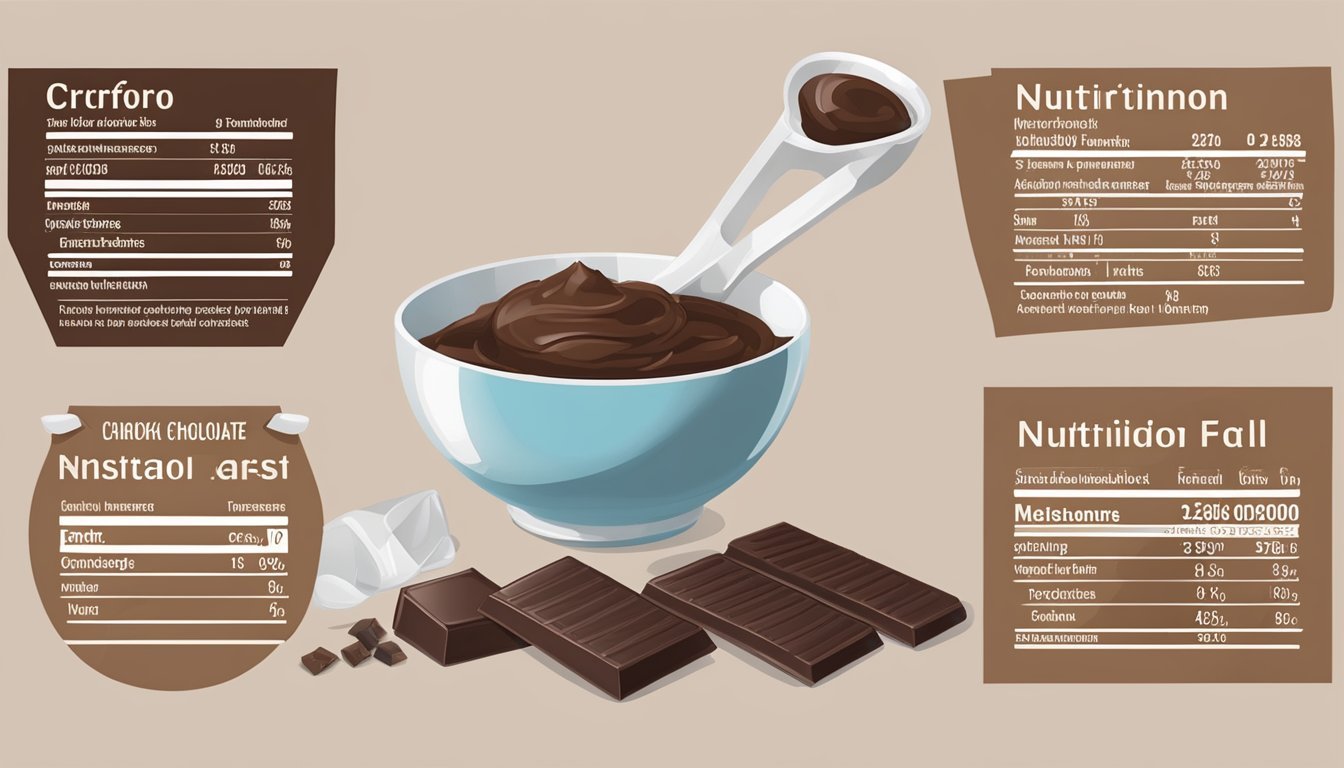How Many Servings of Dark Chocolate Per Day Is Too Much?
Understanding Limits for Health Benefits
Dark chocolate is often touted as a healthier alternative to its milk and white counterparts due to its higher concentration of cocoa, which is rich in beneficial antioxidants. Regular consumption of dark chocolate is associated with a range of health benefits, including improved heart health and brain function. However, despite these benefits, it's important for individuals to consider the appropriate quantity of dark chocolate to consume, as overindulgence could lead to negative health consequences such as weight gain and excessive sugar intake.
Medical studies and health experts suggest that moderation is key when incorporating dark chocolate into the diet. For instance, research indicates that a small daily serving of dark chocolate—around 6 grams, or a couple of small squares—could be enough to reap cardiovascular benefits without overloading on calories and fat. Furthermore, most health professionals recommend that dark chocolate should be eaten in the context of an overall balanced diet and not as a standalone health supplement.
Determining the optimal daily intake of dark chocolate can be a complex undertaking, taking into account individual health profiles, lifestyle, and dietary needs. It's important for consumers to understand both the potential benefits and the limitations of dark chocolate consumption. While dark chocolate can be a delightful and beneficial treat, it still contains calories and sugar that contribute to one's daily intake, and thus, should be eaten thoughtfully.
Health Benefits of Dark Chocolate
Dark chocolate, with its high cocoa content, is more than just a satisfying treat; it's a powerhouse of important nutrients. It is a significant source of minerals such as iron, magnesium, and zinc, which are essential for various bodily functions.
A compelling attribute of dark chocolate is its concentration of antioxidants. Specifically, it contains flavonoids, which are known for their anti-inflammatory and antioxidant properties. These compounds contribute to the reduction of oxidative stress and combat the damaging effects of free radicals, potentially slowing down aging processes.
The flavanols in dark chocolate are particularly interesting due to their link with improved heart health. Studies suggest that moderate consumption can support cardiovascular health, by improving blood flow and lowering blood pressure, which may diminish the risk of heart disease.
In terms of mental health, dark chocolate has been observed to enhance mood and cognitive function. This is thought to be due to its flavanol content and the ability to increase blood flow to the brain.
Despite its calorie density, dark chocolate also contributes fiber to one's diet, along with its mineral content, underscoring its role as a nutritious food when consumed in moderation.
Nutrient Benefit Antioxidants Combat oxidative stress Flavonoids Offer anti-inflammatory benefits Magnesium Essential for various physiological processes Iron Critical for oxygen transport in the blood Fiber Supports digestive health
In sum, while dark chocolate is a rich and indulgent food, its constituents offer a range of health benefits that justify its inclusion in a balanced diet.
Nutritional Profile
The nutritional value of dark chocolate is influenced primarily by its cocoa content, which directly affects its macronutrients and mineral profile, while added sugars and fats modify its calorie count and health benefits.
Cocoa Content and Composition
Dark chocolate's health attributes are largely due to its cocoa content. A higher percentage of cocoa, typically ranging from 70% to 85%, indicates a richer presence of chocolate solids derived from the cocoa bean. The primary components of these solids include cocoa butter and cacao, both essential for dark chocolate's nutritional content. Cocoa butter contributes to the fat content, while cacao is key for providing minerals and antioxidants.
Macronutrients and Minerals
The macronutrient profile of dark chocolate includes proteins, carbohydrates, and fats, with a 101-gram bar of dark chocolate containing approximately:
Calories: 604
Protein: 7.87 grams
Fat: 43.06 grams (saturated fat being a significant component)
Carbohydrates: 46.36 grams
In terms of minerals, dark chocolate is an excellent source of certain trace minerals. For example, the same size serving typically contains:
Iron: 12 mg
Magnesium: 230 mg
Copper: 1.9 mg
Zinc: 2.2 mg
These minerals contribute to various bodily functions, including immune response and metabolic processes.
Added Sugars and Fats
Manufacturers often add sugars and fats to dark chocolate, impacting its nutritional value. While these additives can enhance flavor, they also increase calorie content and may contribute to health issues if consumed in excess. It's important for consumers to read labels and choose dark chocolate with lower amounts of added sugars and fats to maximize its health benefits. Typically, a serving size of dark chocolate should contain less cholesterol and lead than milky variants, as milk chocolate usually incorporates more added sugars and milk fats.
Recommended Serving Size
When determining the proper serving size of dark chocolate, consumers should consider expert recommendations and nutritional content. Nutritionists often suggest a serving size of dark chocolate to be between 1 and 2 ounces (approximately 30 to 60 grams). It is generally advisable to limit oneself to this amount to avoid excessive calorie intake.
For reference:
1 ounce of dark chocolate is equivalent to 28.35 grams.
2 ounces translates to 56.7 grams.
Ounces Grams 1 28.35 2 56.7
Eating dark chocolate in moderation can offer health benefits, as it is rich in antioxidants. A small daily serving, such as 6 grams (or about 0.2 ounces), was found to possibly reduce the risk of heart-related events, according to one study.
A typical square of dark chocolate might weigh approximately 10 grams. Thus, the number of squares representing a single serving would be around 3 to 6 squares for a 1 to 2 ounce serving.
Consumers should be mindful of the calorie and fat content when indulging in dark chocolate, as overconsumption can lead to unwanted calorie surplus. For example, a 1.45-ounce (41 grams) serving of dark chocolate can contain up to 190 calories.
In summary, moderate consumption constitutes adhering to the advised serving size range, balancing enjoyment with the nutritional aspects of dark chocolate.
Risks and Considerations
When consuming dark chocolate, individuals should be aware of its potential effects on cardiovascular health, blood sugar levels, and the presence of certain contaminants. The following subsections address these considerations.
Cardiovascular Effects
Dark chocolate is rich in flavanols, which are believed to benefit heart health by lowering blood pressure and improving vascular function. However, excessive intake can lead to negative cardiovascular effects, particularly due to high fat and sugar content. It's important to note that while moderate consumption may support heart health, overindulgence can contribute to high cholesterol levels, increasing the risk of heart attack and stroke.
Key points:
Flavanols can improve heart health
Overconsumption may increase cholesterol levels and risk of heart disease
Impact on Blood Sugar and Diabetes
The cacao in dark chocolate can influence insulin sensitivity, potentially offering protective benefits against type 2 diabetes. Despite these benefits, dark chocolate often contains sugar, which can affect blood sugar levels. People with diabetes or insulin resistance should therefore consume it cautiously and monitor its impact on their blood glucose.
Key points:
Dark chocolate can enhance insulin sensitivity
Sugar content in dark chocolate requires careful consideration by those with diabetes
Potential Contaminants
A notable contaminant in some dark chocolate is cadmium, a heavy metal that can lead to cancer and other health issues upon long-term exposure. Since the cocoa plants absorb cadmium naturally from the soil, it can accumulate in the cacao used for chocolate production. Regular consumption of dark chocolate with high cadmium content could pose a risk of chronic inflammation and associated health problems.
Key points:
Cadmium in dark chocolate poses potential health risks
Consumers should check for cadmium levels in dark chocolate products
Comparison with Other Chocolates
When evaluating the appropriate servings of dark chocolate per day, it's informative to compare it with other types of chocolate, such as milk chocolate. Cocoa solids are a key distinguishing factor; dark chocolate typically contains higher cocoa content compared to milk chocolate. This difference directly influences the nutritional profile, flavor, and health benefits of the chocolates.
Milk Chocolate:
Lower percentage of cocoa solids
Higher sugar and fat content, contributing to a sweeter taste
Reduced levels of flavanols due to lower cocoa content
Dark Chocolate:
Higher percentage of cocoa solids, often 70-85%
Less sugar than milk chocolate, leading to a less sweet and more intense flavor
Higher fat content, but fats are mostly from cocoa butter
Rich in flavanols, which contribute to potential health benefits
The nutritional value also differs significantly. Dark chocolate is renowned for its rich flavanol content, which is linked to various health benefits such as improved heart health and lower blood pressure. In contrast, milk chocolate's nutritional benefits are less pronounced due to the dilution of cocoa with added milk and sugar.
When considering how much dark chocolate one can safely consume daily, these nutritional differences are critical. The higher flavanol content in dark chocolate can mean that smaller servings are sufficient to reap potential health benefits, whereas milk chocolate's higher sugar and lower cocoa solid content could contribute to quicker overconsumption relative to the recommended daily intake.
In sum, when comparing serving sizes, dark chocolate's nutrient density and lower sugar levels mean that its servings are likely smaller than those of more sugar-laden milk chocolates.
Consumption Tips
When it comes to eating dark chocolate, understanding moderation and smart pairing with other foods can enhance the benefits and prevent overconsumption. These tips help maintain a healthy balance between enjoying a treat and supporting heart health and aging.
Moderation Guidelines
Moderation is crucial in enjoying dark chocolate as part of a healthy diet. Here are specific guidelines to consider:
Daily Limit: It's wise to limit the intake to about 1 to 2 ounces (30-60 grams) per day to avoid excessive calorie intake.
Caloric Content: An ounce of dark chocolate typically contains around 150 to 170 calories. Overindulging could lead to weight gain, affecting heart health and cholesterol levels.
Pairing with Other Foods
Pairing dark chocolate with certain foods can balance the meal and add nutritional value:
Nuts: Incorporating a handful of almonds or walnuts can offer healthy fats and fiber.
Organic Options: Opt for organic dark chocolate to avoid unnecessary additives and support a cleaner snack option.
Meal Accompaniment: Adding a small serving as a dessert post-meal can satisfy a sweet tooth while benefiting from the antioxidants without overindulging.
Psychological Effects of Chocolate
Chocolate, specifically dark chocolate, has been studied for its psychological benefits. It contains a compound called phenylethylamine, which is often referred to as a 'love drug.' This chemical stimulates the brain to release endorphins, leading to a boost in mood and happiness levels.
In terms of cognition, moderate consumption of dark chocolate has been associated with improved cognitive function. The flavonoids in chocolate promote brain health by enhancing blood flow. This is partly due to the production of nitric oxide, which relaxes blood vessels, thereby improving circulation and potentially benefiting cognitive performance.
The relationship between chocolate and psychological well-being is also connected to its sensory qualities. The taste, texture, and aroma can lead to immediate pleasure and a temporary sense of euphoria. However, it is important to be aware that excessive consumption may lead to negative health impacts.
Here's how dark chocolate influences mood and cognitive function:
Mood Improvement:
Stimulates endorphin production
Contains phenylethylamine, which may induce feelings similar to being in love
Cognitive Function:
Flavonoids in dark chocolate can enhance blood flow to the brain
May improve mental acuity and attention span due to increased blood flow and nutrient delivery
Consumers should enjoy dark chocolate in moderation to reap these psychological benefits without overindulgence.
Buying Guide
When selecting dark chocolate, the consumer should focus on the quality and content of cocoa, as well as the preservation of health-beneficial flavanols.
Labels and Certifications
Organic Certification: Buyers should look for dark chocolate that is certified organic to ensure it does not contain synthetic pesticides or fertilizers. This can be verified via labels like the USDA Organic seal.
Vegan and Dairy-Free: Those with dietary restrictions or preferences should check for vegan certifications or dairy-free labels, especially if avoiding animal products or lactose is a concern.
Cocoa Content: High cocoa content, indicated by a percentage on the label, typically implies a richer flavor and more pronounced health benefits. Dark chocolate typically ranges from 70% to 85% cocoa solids, which are known for containing flavanols.
Certification Implication Organic No synthetic additives Vegan No animal products Dairy-Free No milk or lactose Cocoa Solids % Indicates intensity and flavanol content
Flavanol Preservation
Processing: The method of processing can significantly impact flavanol levels in dark chocolate. Consumers should look for products that have undergone minimal processing to retain these compounds, as some methods can reduce flavanol content.
Flavanol Content: While not always explicitly listed, the preservation of flavanols can often be inferred from the chocolate's bitterness and the lack of alkali processing, also known as "Dutch processing", which reduces flavanol content.
In addition, since the inclusion of additional ingredients can dilute the health benefits, individuals should be attentive to the presence of sugars, fats, and additional flavors which can affect the overall nutritional profile of the chocolate.
Dark Chocolate in Diet and Lifestyle
Incorporating dark chocolate into one's diet should be approached with a balance of enjoyment and health-awareness. Those who opt for dark chocolate as part of their healthy eating routine can benefit from its components. Notably, dark chocolate is abundant in magnesium, a mineral crucial for various bodily functions including maintaining healthy blood flow and nerve function.
Dark chocolate is also associated with possible heart health benefits, as it may help to improve cholesterol levels by increasing HDL (good cholesterol) and potentially reducing LDL (bad cholesterol) when consumed in moderation. This characteristic makes it a favorable choice for individuals focusing on cardiovascular well-being.
For those adhering to vegan dietary restrictions, dark chocolate, specifically varieties without any milk content, can be a compatible indulgence. It is vital for vegans to check labels, as some products might contain milk derivatives.
When integrating dark chocolate into a diet, portion control is key. A small amount, such as 1-2 squares or approximately 6 grams, could offer the aforementioned health benefits without overindulgence. Here is a quick guide to dark chocolate serving sizes:
Dark Chocolate (70-85% Cocoa) Nutrients 1.5 ounces (approx. 2 squares) 220 calories, 2g protein, 13g fat, 24g carbohydrates, 3g fiber
Consumers should prioritize dark chocolate with higher percentages of cocoa for fewer added sugars and more healthful components. As with any food, optimal consumption of dark chocolate hinges on moderation and its melding within a balanced diet.
Scientific Studies and References
This section encompasses critical insights from scientific studies focusing on the consumption of dark chocolate and integrates official dietary recommendations to determine appropriate serving sizes.
Recent Research Findings
Recent studies have indicated that dark chocolate is abundant in antioxidants, polyphenols, and flavanols. These compounds have been associated with a variety of health benefits, such as improved blood flow and heart health. For instance, the European Heart Journal has published research suggesting that moderate consumption of dark chocolate could yield cardio-protective effects.
Key compounds in dark chocolate linked to health benefits:
Antioxidants: May help reduce oxidative stress.
Polyphenols: Can exhibit anti-inflammatory properties.
Flavanols: Associated with improved vascular function.
Research on dark chocolate has also explored its potential role in cancer prevention. Although findings are not concrete, the antioxidants and anti-inflammatory properties of dark chocolate are thought to reduce the risk of certain types of cancer.
Official Dietary Recommendations
When it comes to how much dark chocolate one should consume, the American Heart Association and other health organizations stress moderation. The absence of a universally endorsed "daily allowance" for dark chocolate warrants a careful approach to its consumption.
Dietary guidelines:
American Heart Association: Emphasizes moderation in dark chocolate intake due to its calorie and fat content.
Caloric and fat content consideration: Dark chocolate is high in calories and could contribute to weight gain if consumed excessively.
Individuals should always consider the energy content of dark chocolate in the context of their total daily caloric needs to avoid unintended effects on health, particularly concerning saturated fat intake and total caloric balance.
Conclusion
When considering how much dark chocolate to consume daily, moderation is key. Research and expert recommendations converge on 1 to 2 ounces (30 to 60 grams) as an optimal serving size. This quantity balances the desire for a sweet treat with the potential health benefits derived from dark chocolate, such as antioxidant content, without overindulgence leading to excessive calorie intake.
Dark chocolate with a cocoa content of 70% or higher is preferable, as it contains more antioxidants and less sugar. However, individuals must be mindful of their overall calorie consumption because dark chocolate is calorie-dense.
Daily consumption exceeding these amounts may lead to health drawbacks related to increased calories and sugar intake. Thus, it is recommended to savor dark chocolate in moderate amounts and consider it as part of a balanced diet.
Consistently adhering to the recommended serving size will allow individuals to enjoy the taste and potential health benefits of dark chocolate while maintaining nutritional balance.











